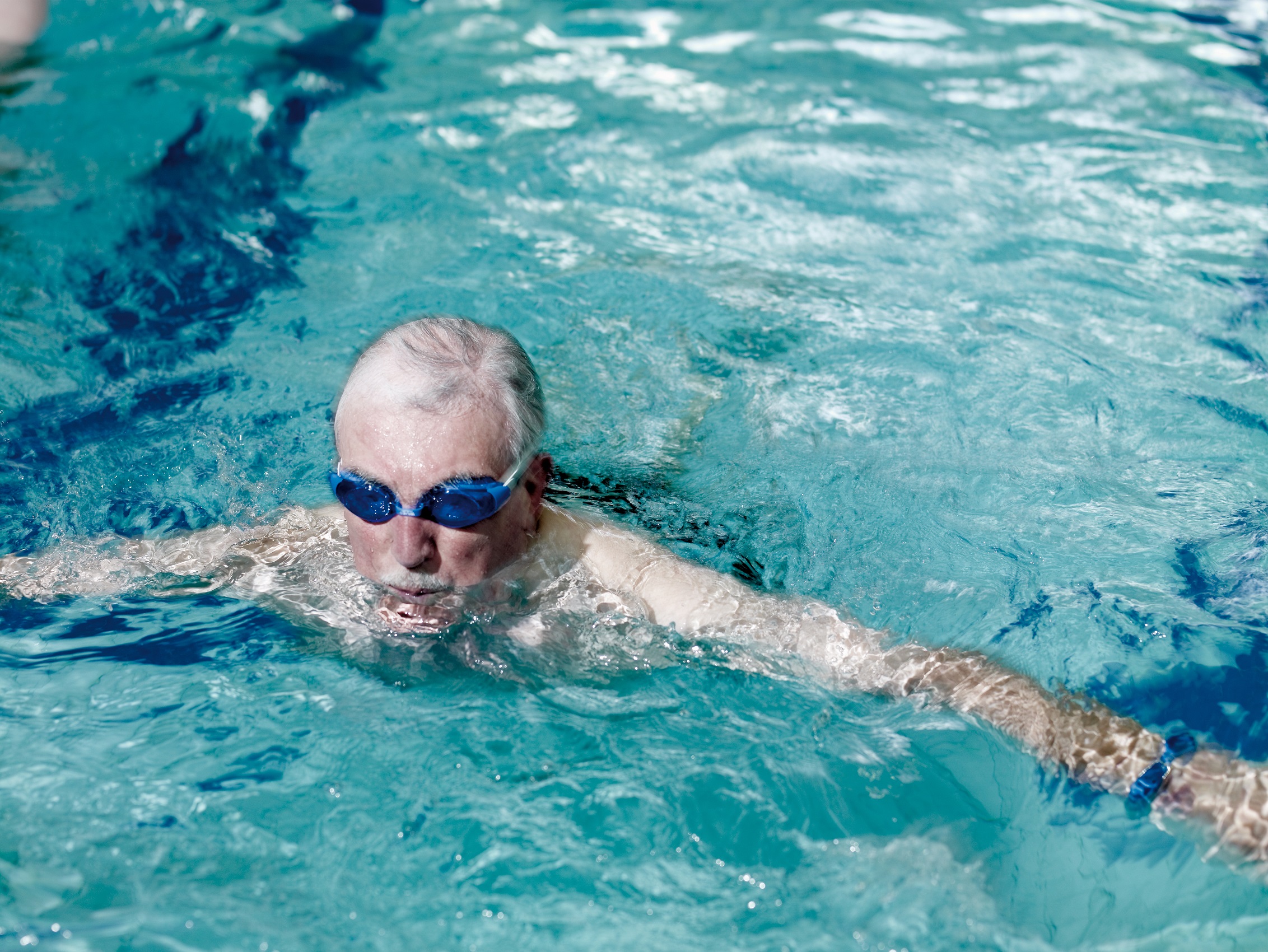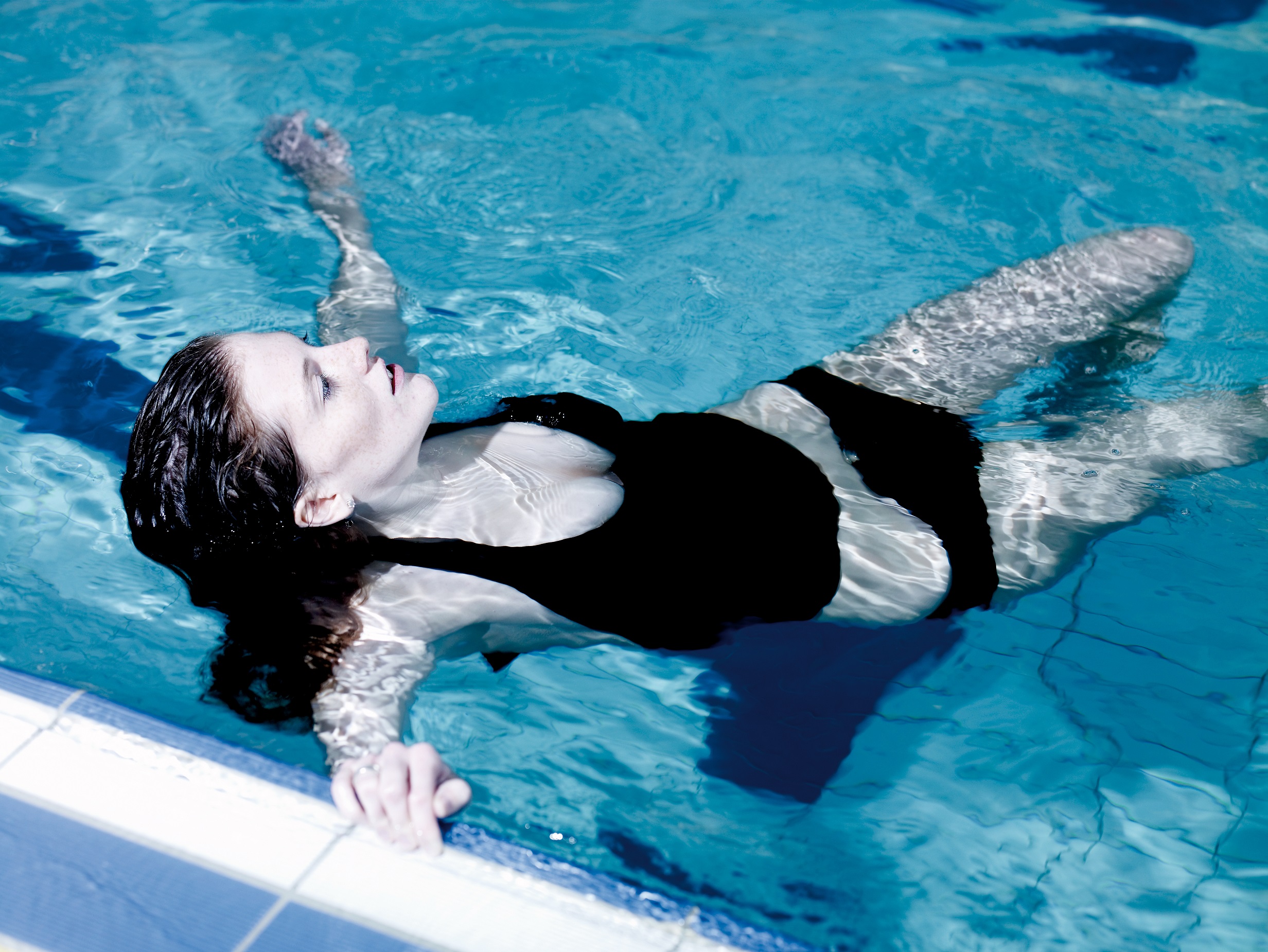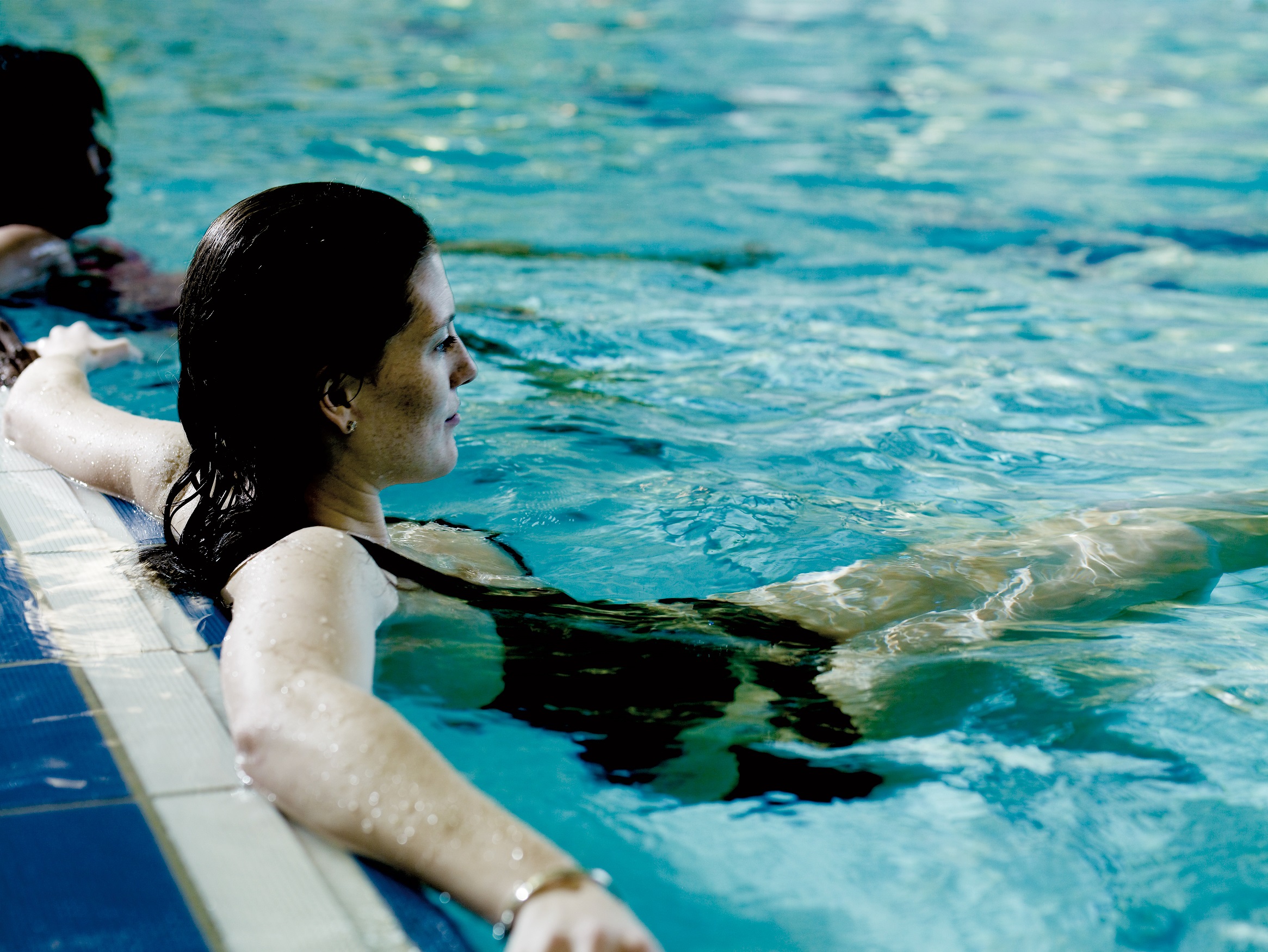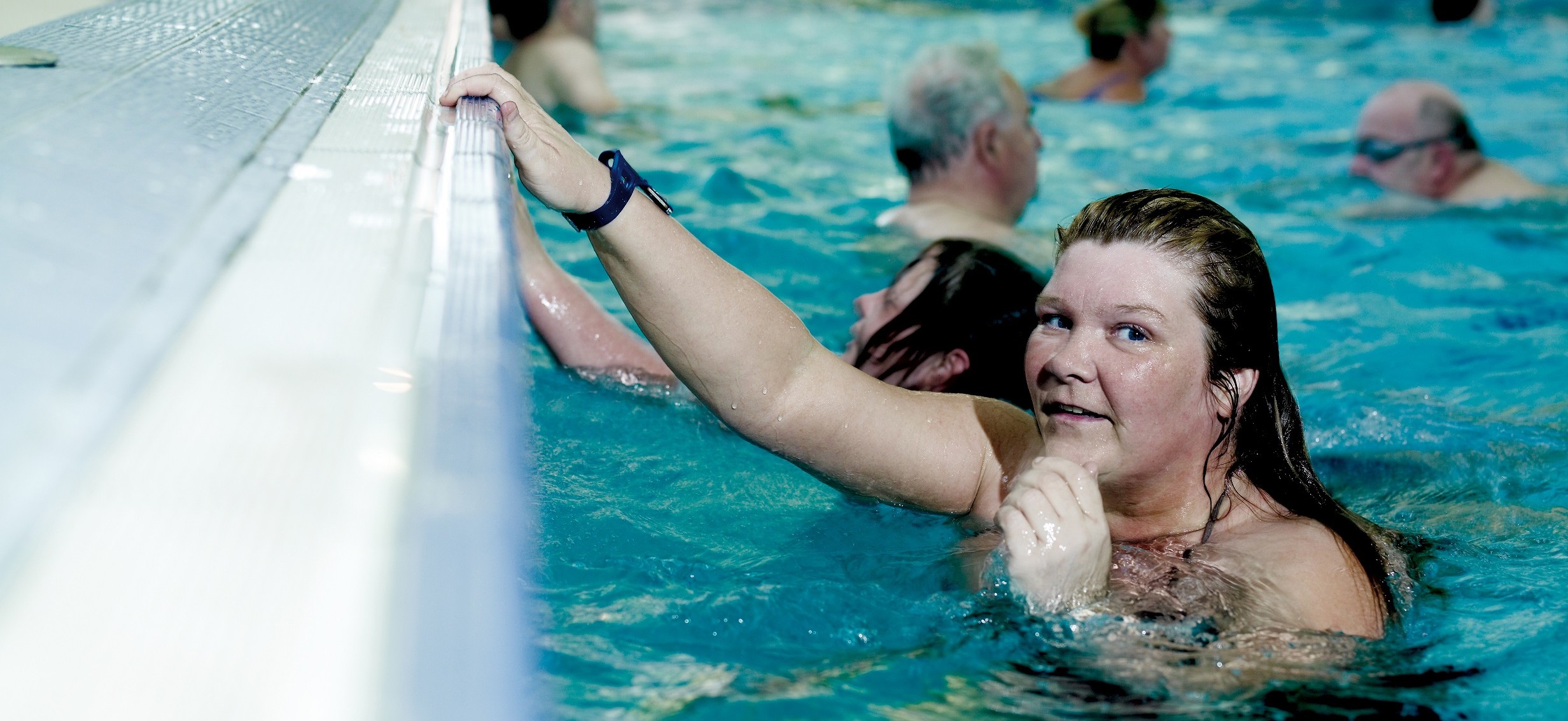One quarter of adults in the UK can’t swim 25 metres (YouGov 2016) – that’s one length of a standard size pool. It’s also the distance children are expected to be able to swim by the time they leave primary school – though the Amateur Swimming Association (ASA) say one in three children leave school unable to swim.
Swimming is great exercise; it provides a cardiovascular workout and strength training for your legs, arms and core. As you’re buoyant in the water, there is also no jarring of your joints and it is non weight bearing, making swimming a perfect exercise for those who are getting older or those with joint problems.
It’s never too late to get into the pool – from eight months to eighty (and beyond), there are lessons to suit all ages, and abilities of swimmer. Your local swimming pool will have lessons for both adults and children, swimmers and non-swimmers;
If you can already swim, lessons can help you: refine your technique, swim better (so you don’t injure yourself), get stronger and master different skills, like diving or swimming under water.
If you can’t swim, going to a lesson can be a bit daunting. But don’t worry, instructors are trained to support those who can’t or haven’t swum before, and even to help people overcome their fear of water. So, what can you expect from your first swimming lessons?
Get in, the water’s lovely

If you haven’t swum before, or for a long time, getting back in the water can be intimidating. However, an instructor will take time introducing you to the water and making sure you feel comfortable just being in the pool. Many pools will start your first lessons in the smaller pool, or the shallow end of the larger pool.
Once you’re in, you will be encouraged to walk around in the shallow end and get used to the feeling of the water and to your body’s buoyancy. When you feel ready, you will be encouraged to walk slowly out to where the water is up to your shoulders.
Don’t worry if it takes more than one visit until you feel comfortable in the pool. Tell your instructor if you’re really worried, or if anything makes you feel uncomfortable. Swimming lessons are sometimes in groups – if you’re very nervous, ask about one to one lessons.
Use your head

Once you feel comfortable walking and standing in the pool you can progress to getting your face and head wet. Your instructor will help you get used to putting your head under the water, and may ask you to breathe bubbles out in the water too.
Many people don’t like getting their head wet or are afraid of putting their head under the water. You might question why your instructor wants you to put your face in the water, but it will help when you learn to swim – to swim properly (and avoid injury to your back and neck) you will put your head in the water between strokes. Wearing goggles and a swimming hat may help.
Float away
Once you are comfortable in the water you instructor will teach you how to float. They will start off by getting you to float on your back at the side of the pool, holding onto the ledge. When you have mastered this, they will get you to practise your kicking whilst still holding onto the side of the pool.

After you have tried kicking (don’t worry, this won’t be all in one lesson!), you may start learning to swim using a flotation board – starting off with pushing off from the side of the pool, the progressing to kicking yourself along with the board held out in front of you.
Stroke of genius
Once you feel confident floating and kicking yourself around the pool, it will be time to master the strokes. Don’t worry, you’ll be very uncoordinated at first and won’t be able to swim far. But with swimming, it’s all about practise!
You won’t be expected to just know the strokes associated with swimming – your instructor will explain them to you and show you how to move your arms and legs. Usually you’ll practise aspects of each stroke at the side of the pool or with a flotation board first, before putting it all together.
Learning to swim can be daunting and isn’t something you can pick up in one or two lessons. Lessons will give you the foundations you require to swim properly and the confidence to swim well.
However, learning to swim is about practise, so why not visit the pool in-between lessons and try out what you have learned that week? Just remember, only use the pool when there is a lifeguard on duty and never try anything you’re not sure about. You can also practise your arm strokes stood up at home – there are lots of videos online showing you the best way to do this.
Whether you’re eight, eighteen or eighty, swimming is a great exercise that is really enjoyable and is an important skill to learn – so why not make a splash and learn how to swim?

